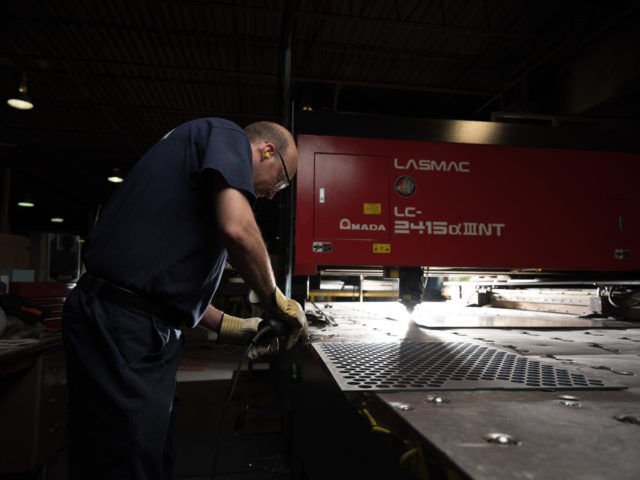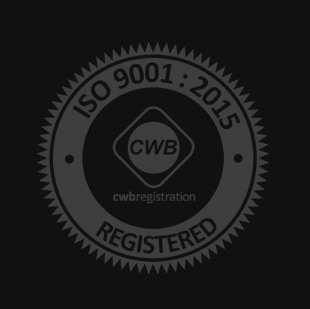Sheet metal is a vital material widely used for mass production of goods in many industries. Types of sheet metal for industrial processes vary in relation to the application requirements of products, parts and components. It is considered one of the more versatile materials used in manufacturing. Derived from a metal or its alloy—with steel, stainless steel, galvanized steel and aluminum being the most commonly used material. Manufacturing applications for sheet metal are found in such industrial sectors as transportation, aerospace, consumer electronics, appliance manufacturing, industrial architecture, machines and machinery, and much more.
What is Sheet Metal?
Sheet metal is an indispensable material essential to the global industrial economy. It is formed by an industrial process into thin, flat pieces or coils. Whatever the type of metal, the first step is melting it to a molten state. It’s then poured into a rectangular mold to cool. Once hardened, the rectangular block of metal, referred to as an ingot, is cleaned with a mixture of chemicals, a process known as pickling. After cleaning, the ingot is placed through a press consisting of two large rollers to thin it out to a desired thickness. As the metal is being pressed and thinned it may require annealing, a process that heats or warms the metal to a degree, literally and figuratively, but not to a melting point. During the annealing process, the metal is subjected to pickling again. Once the sheet metal has been pressed, depending on that thickness, it is ready to be shipped flat or rolled into a coil.
Once sheet metal has been prepared it is instrumental in metalworking and fabrication of products and goods. It can be cut, bent, rolled, punched or formed into a variety of shapes. Sheet metal forming modifies its geometry rather than removing any materials. The process generates force that stresses the material to deform and stretches it into a variety of complex shapes. Plain flat sheets can also be embossed, etched, ribbed, corrugated, or perforated.
Sheet metal is defined by its thickness. Though thin, leaf foils or thick metal plate, also referred to as structural steel, may be considered a type of sheet metal, by definition the sheets used for manufacturing and industrial applications range in thickness from 1/64 to 1/4 inch. The specific thicknesses of sheet metal are expressed in gauges in the U.S. and millimeters or mils throughout the world.
Types of Sheet Metal Materials
Sheet metal is made with varied metals and metal alloys for a multitude of purposes. Material selection depends in large part on the application requirements of the product or component. Factors like formability, corrosion resistance, strength, weight, durability, the material’s weldability, and even cost are all considered in material selection. The more common types of sheet metal used in fabrication include various steels and aluminum.
Steel
Steel, an alloy of iron and carbon, is known for its strength and durability. There are multiple kinds of steel and alloys each with unique properties. Steel that contains up to 2% carbon and does not contain standard amounts of any other elements such as cobalt, nickel, tungsten, molybdenum, or titanium is classified as carbon steel. Steel can be cold rolled or, add a minimum of 10.5% chromium and combine it with other elements, and it is transformed into a variety of stainless steel grades. Combine steel with molybdenum, vanadium, tungsten, or cobalt for tooling steel applications like drilling or machinery. Pre-plated galvanized steel, steel coated with zinc oxide to prevent rusting, is another variation of steel used for sheet metal.
Aluminum
Aluminum is a more lightweight material while also sharing some of steel’s strength. It is a moderately priced material and it shares a range of characteristics across several grades that are ideal for many application requirements. Most grades offer strength and formability, are weldable and also weather and corrosion-resistant. Aluminum also performs well in lower temperatures, which accounts in part for its use in aerospace and refrigeration.
Other Types of Materials
Depending on the property requirements of the component or product, other types of sheet metal materials are magnesium, brass, bronze, tin, titanium, copper and nickel. Each of these metals, along with steel and aluminum, can be formed into flat pieces of varying thicknesses for use in many applications.
There are many types of sheet metal material available for manufacturers today. Steel and alloy steels, along with aluminum, are the most common. The material offers such advantages as durability, formability, versatility, and reasonable material costs, which makes sheet metal a prime fabrication component for countless products around the globe.



